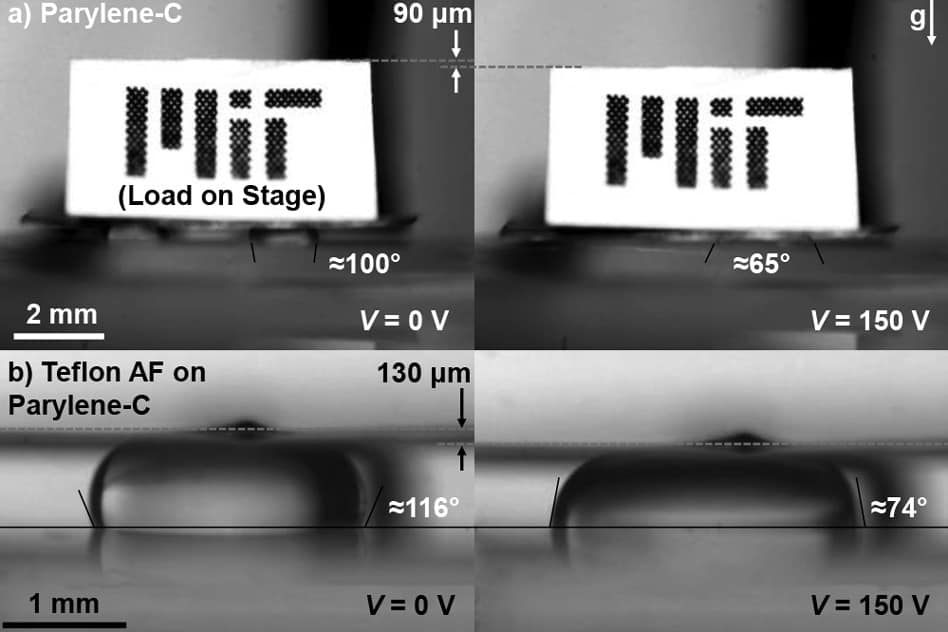
Micro-electromechanical systems (MEMS) are used extensively in devices such as the accelerometers and motors in mobile phones, but because they have moving parts which are in contact with each other, they tend to wear out. Such tiny mechanisms cannot be maintained in a practical sense, so must be replaced. This limits the lifetime of devices.
A research team at MIT in Boston has devised a method for moving a solid "stage" or platform on a chip without any solid parts in contact with each other. The stage can be raised and lowered while remaining parallel to the support chip, tilted or translated around. It does this by floating on a layer of liquid droplets on the surface of the chip, whose size and shape can be altered at will.
The system works by altering a particular property of the droplets of supporting liquid, which can be water or another solvent. The crucial property, called the contact angle, governs how the droplet sits on the surface and depends on the properties of the liquid and the surface itself. If a liquid has a small contact angle on a particular surface, the droplets are flat as the liquid spreads out. If the contact angle is larger, the droplets tend to sit intact on the surface in a more spherical shape. In a paper in the journal Applied Physics Letters, Daniel Preston of MIT's mechanical engineering department and colleagues describe how changing the voltage across the surface of the supporting chip makes droplets of water rounder and flatter under their control, raising, lowering and tilting a platform made from treated copper sitting on the liquid droplet layer.
The side of the platform in contact with water was treated by applying a layer of a very water-repellent material, but leaving spots of the copper exposed. As copper is hydrophilic, these bare spots acted like glue, keeping the platform pinned to the droplets. In Preston's team’s initial prototype device, the platform could be controlled with a precision of 10 µm, over a range of motion of 130 µm. Preston sees many applications within the research; for example, if one side of the platform were silvered, it could be used to reflect a laser, using the voltage control system to tilt and raise the platform and steer the reflected beam.
"There are a lot of experiments that use lasers, that could really benefit from a way to make these small-scale movements,” he said. Known as electrowetting-on-dielectric (EWOD), this technique is not unknown but has not been used to steer a non-contacting platform around a surface before, Preston added.
It would also be possible to build an EWOD supporting chip with a series of electrodes installed, with which the voltage could be changed across the support to steer the platform with precision around its surface. If the chip contained components of a lab-on-a-chip system, for example, the platform could carry a sample around to the various testing stations of the system. And since there are no moving parts in contact with each other, mechanical wear and sticking would not be a problem, as is the case with conventional MEMs.




Poll: Should the UK’s railways be renationalised?
I think your last point is what they're suggesting. I believe the modern way of thinking is to keep these enterprises at arms length from the...